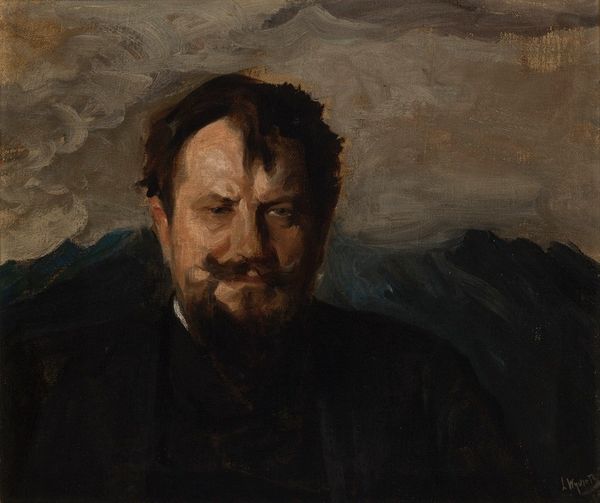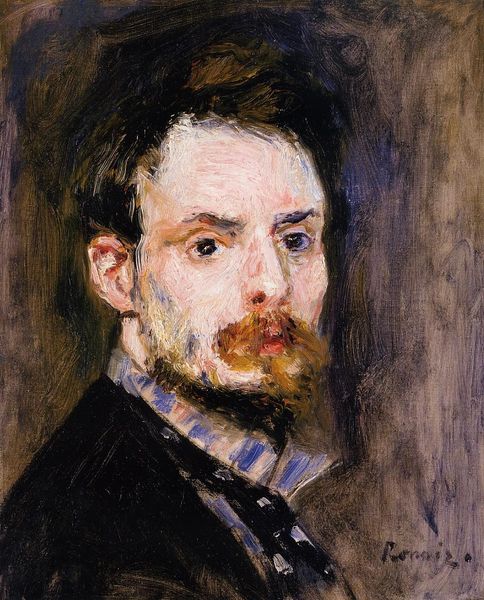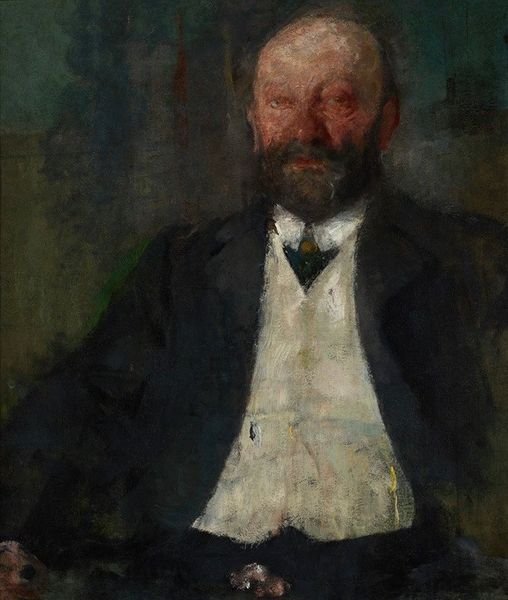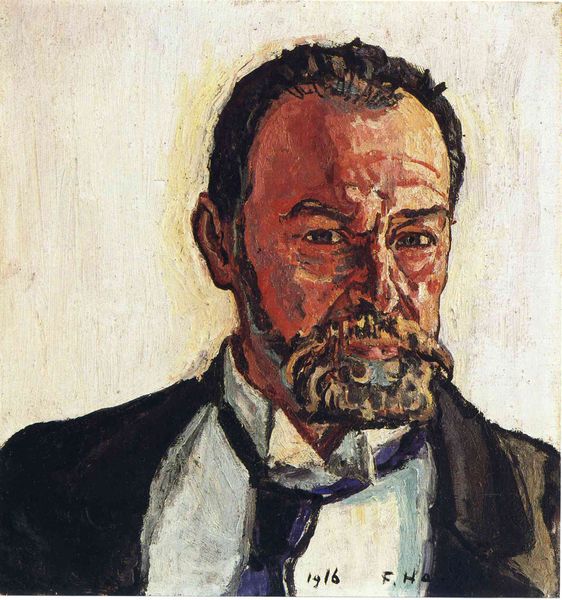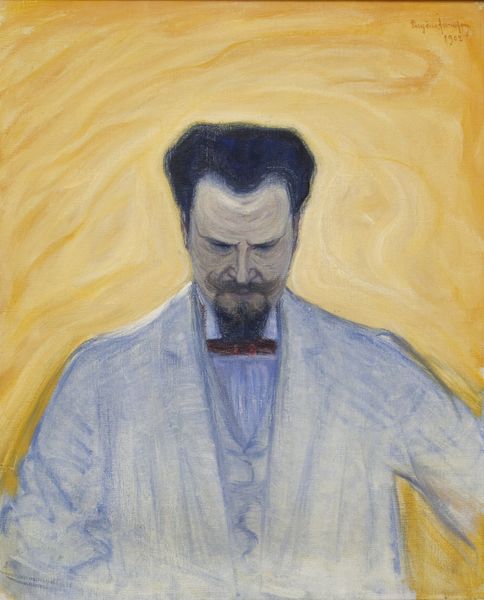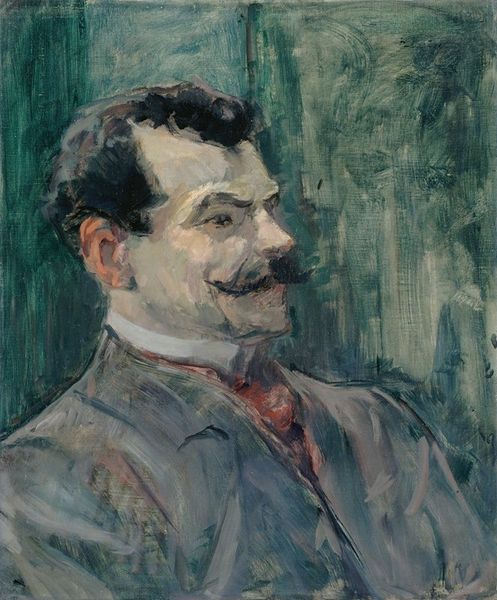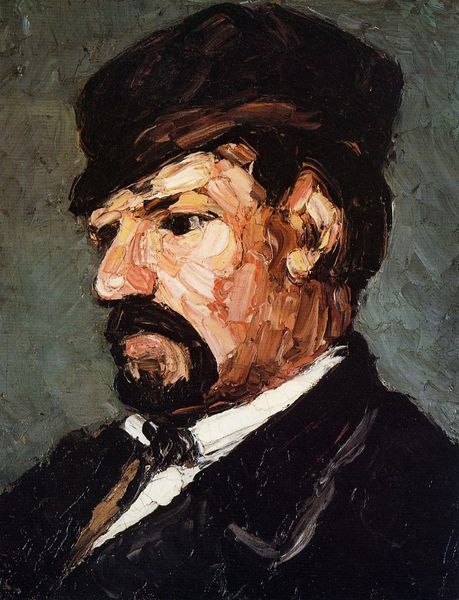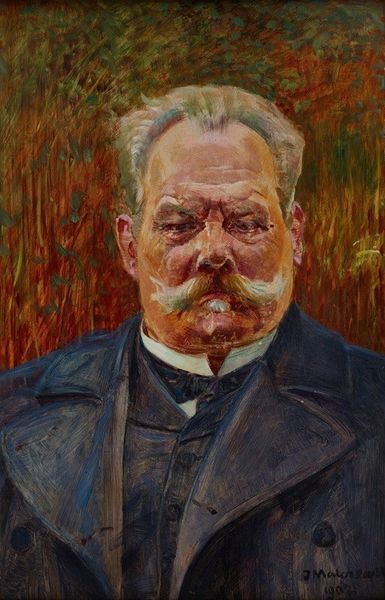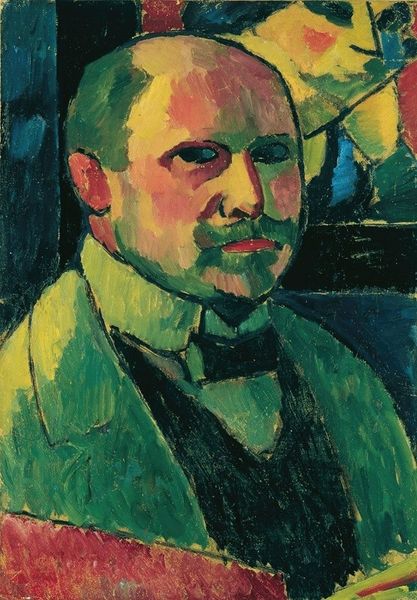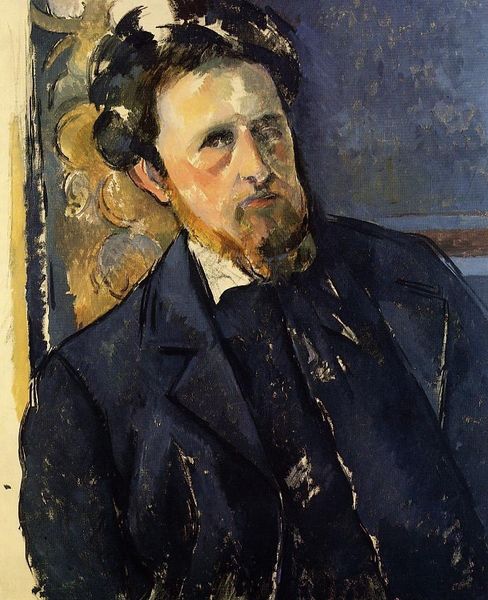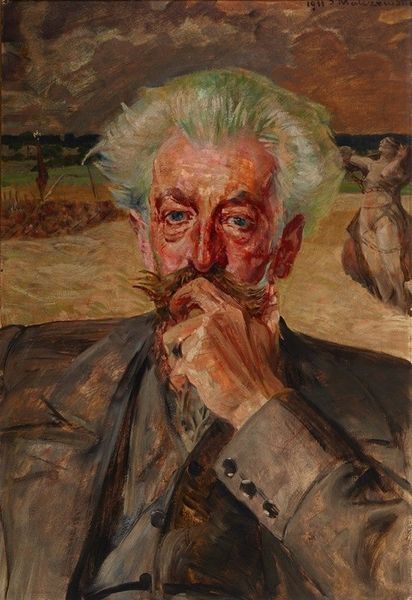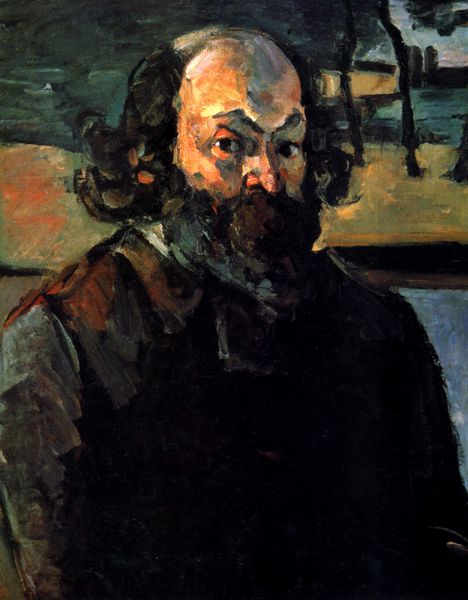
painting, oil-paint
#
portrait
#
figurative
#
painting
#
oil-paint
#
landscape
#
oil painting
#
symbolism
Copyright: Public Domain: Artvee
Curator: Let's discuss Jacek Malczewski's "Portrait of Jan Kasprowicz" from 1903, crafted in oil paint. A remarkable depiction of the Polish poet against an interesting backdrop. Editor: It strikes me immediately as burdened. The heavy brow, the weight of the sitter's gaze – and look at the thick impasto used for the clothing, it gives the impression of heavy cloth almost weighing him down. Curator: Absolutely. There’s a palpable tension. This piece functions on several symbolic levels; it's not simply a representation of Kasprowicz. Malczewski uses Kasprowicz, a fellow intellectual, as a lens to examine the weight of Polish identity and the looming sense of societal constraint during a period of political repression. Think of the open field, a subtle suggestion of unrealized potential juxtaposed against the sitter’s interior turmoil. Editor: The artist's visible brushstrokes show the physical labor involved, bringing our attention to the materiality of paint itself. The rough textures seem deliberate; the canvas is part of the message. And speaking of material burden, note the hay bale behind the sitter. I suspect it's included to ground him in everyday realities even as he seeks higher artistic truth. Is he weighed down not just by his emotions, but also the hard work of living? Curator: Yes, precisely. One can even go further to view this tension within Kasprowicz as reflecting the broader artistic and political anxieties facing Polish artists and intellectuals in the early 20th century. Editor: Also, have you noticed the color palette? The muted earthy tones throughout emphasize that labor and also underscore Kasprowicz’s ties to the land. The gray palette suggests, to me, perhaps a sort of social struggle or stagnation that’s linked directly to both his personal experiences and a reflection on social inequities and their persistence. Curator: An insightful material reading, indeed. It showcases how deeply intertwined the artwork is with its production. Viewing the artwork this way really shifts one's understanding of the portrait and its significance within Malczewski's oeuvre, and, I might argue, it opens discussions concerning our modern perspectives. Editor: Looking at the artwork through both approaches gives viewers a much broader grasp of the painting's multiple implications; for me, understanding art from all its angles makes it ever-enduring.
Comments
No comments
Be the first to comment and join the conversation on the ultimate creative platform.
